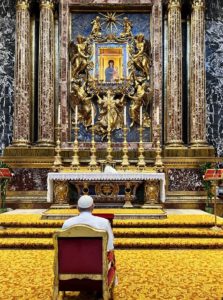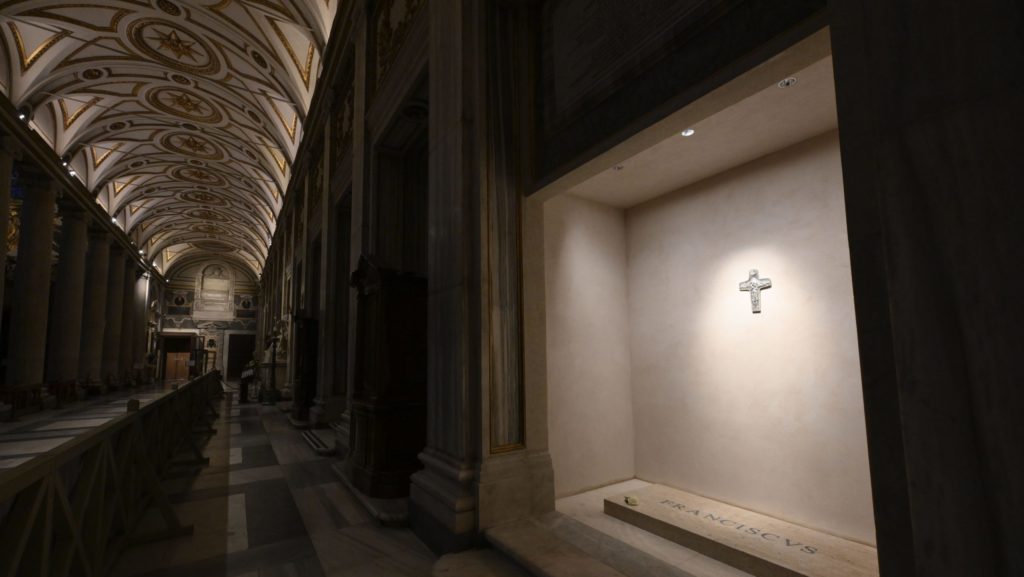In life, Pope Francis seemed to enjoy upsetting conventions and thwarting expectations. He went about in a used Fiat. He took his meals in a cafeteria. He slept in Spartan quarters.
In death, he continued to surprise. One of several curiosities about his funeral was his choice to be buried outside the Vatican — in the Basilica of St. Mary Major on Rome’s Esquiline Hill.
The last pope to be buried outside the Vatican was Pope Leo XIII, who died in 1903 and was buried in the Basilica of St. John Lateran.
Viewers might have expected Francis to be buried inside St. Peter’s, the resting place of every other pope since the invention of television.
But those who followed him closely knew of his special affection for St. Mary Major. It was the first place he visited on his first full day as leader of the Catholic Church. He visited before and after his overseas trips and even after hospital stays.

His visits were an expression of deep Marian devotion. The basilica is the world’s most celebrated shrine to Mary. It was first dedicated to her in the mid-fourth century and completed in the fifth century, shortly after the conclusion of the Council of Ephesus, which defended her ancient title as “Mother of God.” Inside St. Mary Major are precious relics from the manger of Jesus’ nativity. The walls are adorned with fifth-century mosaics depicting the life of the Blessed Mother. The ceiling is embellished with the first gold brought from the Americas by Christopher Columbus.
But for Romans, the church’s greatest treasure is the icon of Mary known as “Salus Populi Romani” (“Health of the Roman People”). Tradition holds that it was painted by St. Luke the Evangelist. It came to Rome by way of Crete in the year A.D. 590, when St. Gregory the Great was pope.
Salus Populi Romani is in a side chapel of St. Mary Major, and it’s there that Romans go to present their most urgent needs to the Queen of Heaven.
It’s there that Francis went whenever he visited St. Mary Major.
Nevertheless, he originally planned for St. Peter’s to be his resting place. But in 2022, the archpriest of St. Mary Major suggested the possibility of changing plans. Francis took the matter to prayer and made his decision public in 2023.
It was an expression of Marian piety, but also of the pope’s Jesuit identity. The Basilica is where St. Ignatius Loyola, the founder of the Jesuits, celebrated his first Mass.
Francis is not the only pope to rest there. Seven others are buried on the grounds, most notably St. Pius V, who established the feast of Our Lady of the Rosary. There is, in addition, a colossal statue of Blessed Pope Pius IX, a nineteenth-century pope who shared Francis’ devotion to the Esquiline church.
It is now, once again, the place a Marian pope has chosen for his rest.

